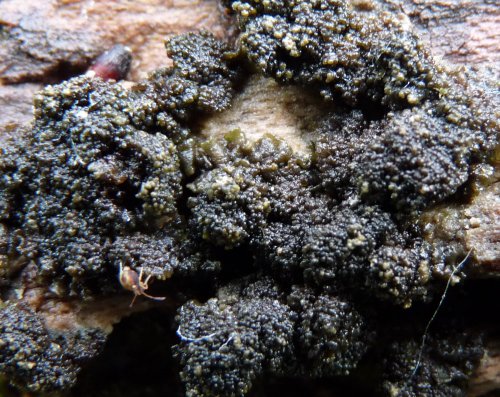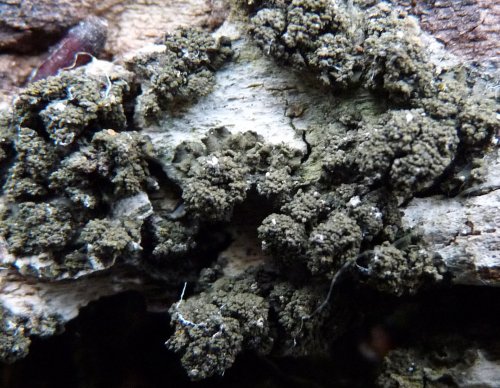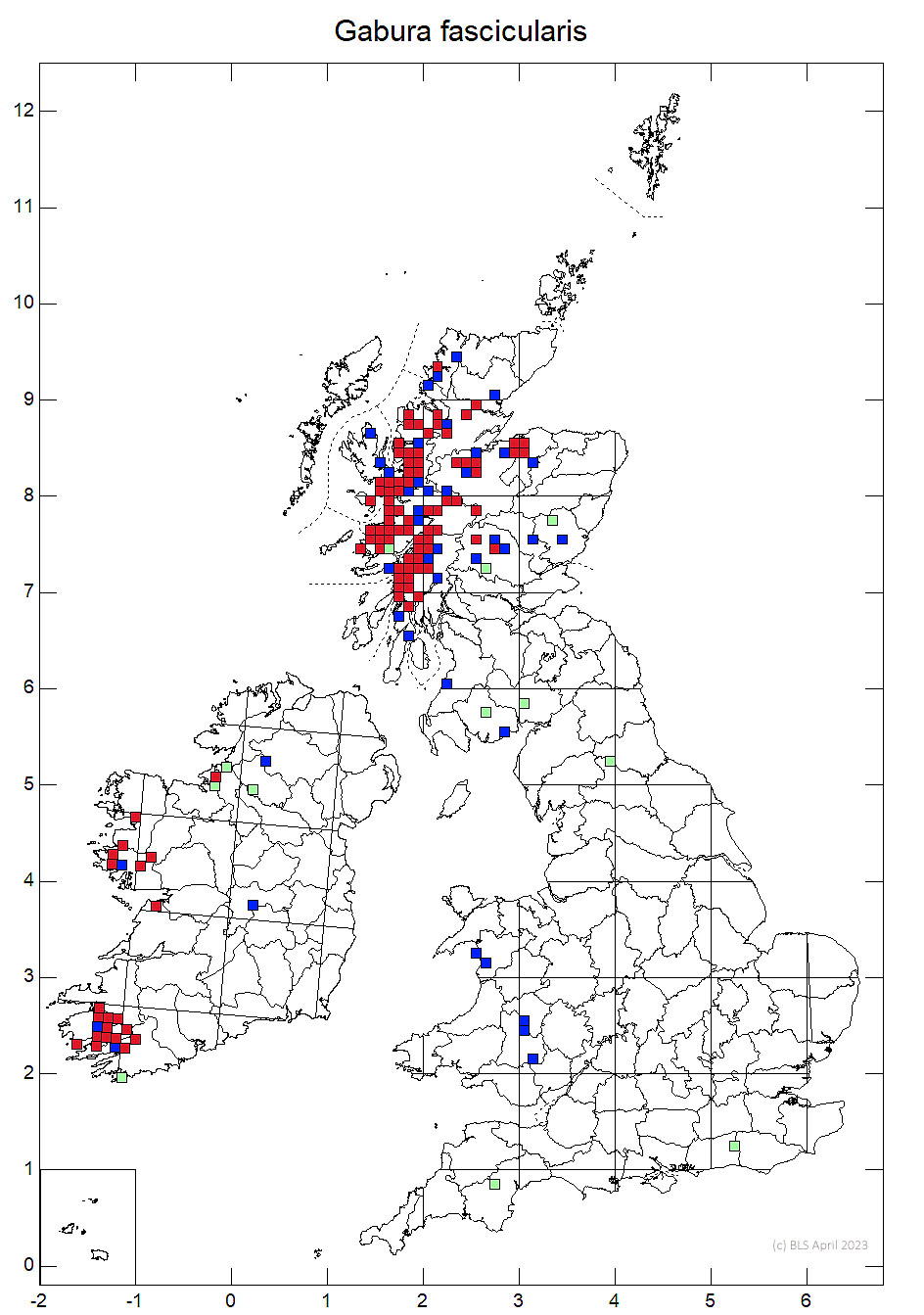This is one of the more distinctive jelly lichens. It forms compact cushion-like colonies that swell up remarkably when wet to 1.5cm in diam and up to 1cm thick with erect, wrinkled lobes. As with all Collema species it lacks a distinct cortex. Apothecia are infrequently produced in Wales but where they do occur have a noticeably thick and wrinkled margin. The spores are unmistakable, being worm-like and with a spiral twist inside the ascus. They are made up of 9 to 16 cells and are between 50 and 95 microns in length.
 |
 |
| Collema fasciculare - wet state (Photo: R.G. Woods). | Collema fasciculare - dry state (Photo: R.G. Woods) |
In Wales it has been recorded on the basic bark of mature elm and ash. Elsewhere in Britain it is recorded from hazel and occasionally amongst mosses on basic rock outcrops. It appears to favour moist, shady sites.
Only three localised Welsh records have been traced. (see below) There are no recent records from England. In Scotland it fortunately persists in many sites in the West Highlands, with a scatter of sites in the Central Highlands and two records from coastal SW Scotland. Elsewhere it occurs in oceanic and sub-oceanic Europe and adjacent parts of Africa and Asia.
Pentecost (1987) notes a specimen collected by PW James c.1970 on ash bark by a stream in SH52 held in the Natural History Museum. Ray Woods found it on an elm at Llysdinam, Brecknock SO05 and on elm below Aberedw Rocks, Radnorshire SO04. By the mid 1980’s both trees had been lost to Dutch elm disease. The BLS database has a record from SH61, the details of which have yet to be traced.
The almost total loss of mature elms in Wales and their continued loss in Scotland through Dutch elm disease has been the major cause of the decline of this species. Favouring base-rich bark, acid rain must also have diminished the area available for colonisation. It is to be hoped it still persists on ash in Merioneth, having been lost from all other localised Welsh localities. Given the recent losses, the Welsh population is accorded a threat status of Critically Endangered whilst in Britain it is considered to be Near Threatened. The British population is also considered to be of International Importance.
Pentecost, A. (1987). The lichen flora of Gwynedd. Lichenologist 19:97-166.
- Log in to post comments

